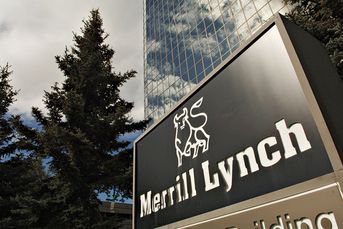Gundlach faces battle to keep his bond star from fading
The DoubleLine manager's fund has barely beat its benchmark over the last three years
Times are tough for active managers, even for Hall of Famers such as Jeffrey Gundlach, manager of the DoubleLine Total Return Bond Fund.
As the Wall Street Journal reported on Sunday, the fund’s assets have declined 13 percent to $53.6 billion in July from a peak of $61.7 billion in September.
It’s not hard to see why. Some investors love to chase hot active managers, and Gundlach’s returns have cooled in recent years. The fund measures its performance against the Bloomberg Barclays U.S. Aggregate Bond Index, despite the fact that the fund’s strategy doesn’t always resemble the index. Thanks to some savvy bets on mortgage-backed securities around the 2008 financial crisis, the fund’s total return beat the index by 5.6 percentage points annually during its first three years from May 2010 to April 2013.
Investors took note. According to Morningstar, the fund’s assets swelled to $31 billion in 2013 from $3.9 billion in 2010.
Those first three years turned out to be the fund’s best, however, and Gundlach’s margin of victory has declined steadily ever since. The fund beat the Aggregate Bond Index by 0.5 percentage points annually over the most recent three years through July.
Granted, any outperformance is laudable, but that’s a small fraction of the bounty that presumably drew investors to the fund in its early days.
Still, Gundlach’s diminishing fortunes are not unusual. Every style of active management goes through ups and downs, and Gundlach’s larger body of work shows he’s no exception. Before he co-founded DoubleLine Capital LP, he managed the TCW Total Return Bond Fund, among other roles at TCW Group.
The TCW fund beat the Aggregate Bond Index by an average of 0.8 percentage points annually over rolling three-year periods from June 1996 to April 2010. But the fund’s three-year returns routinely trailed the index every few years. It happened in 1996, 1997, 2000, 2001, 2005, 2008 and 2009.
Then as now, investors fled when the going got tough. The TCW fund’s assets declined by 31 percent in 1997, by 8 percent in 2000 and by 4 percent in 2001. But Gundlach followed every letdown with another multiyear period of strong performance, and investors poured into the fund again.
This time, however, Gundlach faces new headwinds. The first is the gigantic size of the DoubleLine fund. Gundlach is no stranger to managing large pools of money — by 2009, he was managing $70 billion for TCW in various strategies. But when investors first fled the TCW fund in 1997 after sagging performance, the fund managed roughly $100 million. The next time it happened, in 2000 and 2001, the fund was even smaller. (DoubleLine says that the TCW fund does not account for all the assets that Gundlach managed in the strategy, although it did not provide numbers.)
Also, the DoubleLine fund’s outsized returns came early on when the fund managed $4 billion in 2010 and $15.3 billion in 2011. Whether Gundlach can return the fund to its glory days with $54 billion is a looming question.
The second headwind is that factor investing — or smart beta — is coming for active bond managers, just as it has for stock pickers. Index providers are turning traditional styles of active bond management into systematic and low-cost indexes. According to Morningstar data, 27 exchange-traded funds are already tracking factor bond indexes with total assets of $10.9 billion.
The Bloomberg Barclays U.S. Aggregate Enhanced Yield Index is one of many such indexes. It weights the bonds in the Aggregate Bond Index based on yield rather than market capitalization.
Gundlach has had more difficulty beating the Enhanced Yield Index. It beat the DoubleLine fund by 0.1 percentage points annually over the last three years through July. The index has also beaten the DoubleLine fund during 10 of the last 15 rolling three-year periods from May 2016 through July.
The recent performance of the Enhanced Yield Index also belies the notion that it’s been a particularly challenging environment for active bond managers. The Enhanced Yield Index has beaten the Aggregate Bond Index by an average of 0.3 percentage points annually over rolling three-year periods from August 2005 through July — the longest period for which returns are available. But over the most recent three years, the Enhanced Yield Index has won by 0.6 percentage points annually.
Gundlach is one of the few remaining star managers. If he wants to continue carrying that mantle, he’ll have to find a way to outpace the passive and smart-beta bots.
Nir Kaissar is a columnist for Bloomberg News and founder of the asset management firm Unison Advisors.
Learn more about reprints and licensing for this article.








